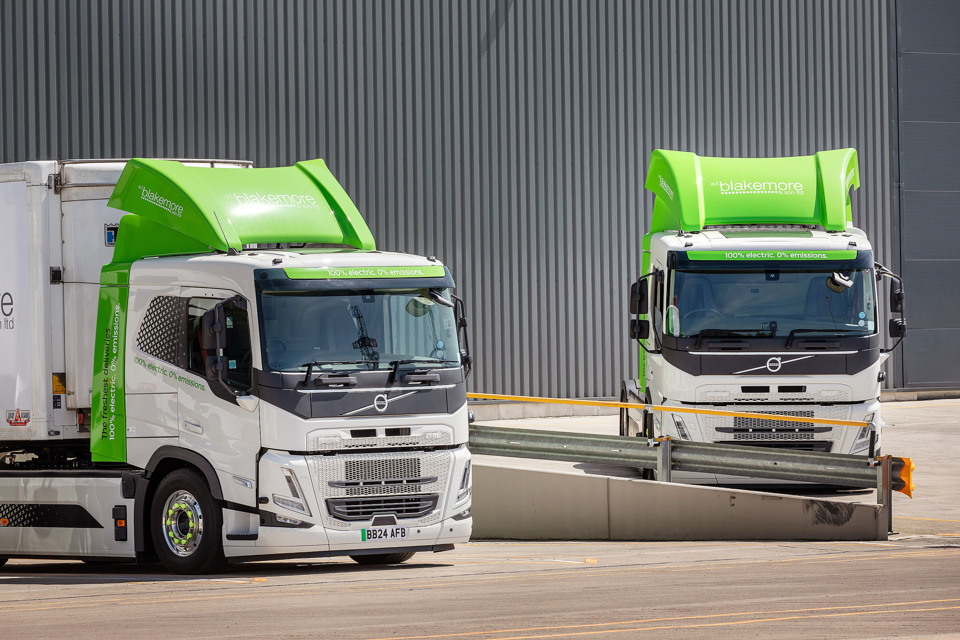The groundwork is being laid for the widespread use of electric heavy goods vehicles (eHGVs), with several fleets deploying the zero-emission trucks as part of Government trials.
Part of the Electric Freightway Project, AF Blakemore and Son, Samworth Brothers, Boughey and United Utilities have all added eHGVs to their existing fleets, with other operators set to follow suit.
Electric Freightway, led by Gridserve, is part of the Zero Emission HGV and Infrastructure Demonstrator programme, funded by the Department for Transport (DfT) and delivered in partnership with Innovate UK.
Future of Roads minister, Lilian Greenwood, said: “A greener transport network is a key priority for this Government, which is why our demonstrator programme aims to scale up zero emission HGVs and install the right infrastructure to decarbonise road freight.
“This is an excellent example of industry and government collaborating to reach net zero.”
Hitachi ZeroCarbon and Gridserve have published the Electric Freightway Project’s second report today (Wednesday, October 30). It followed an initial report, published in March, which outlined the project’s approach and objectives.
This latest update says that the consortium of more than 30 members have made good progress in the demonstration, design and implementation of eHGV infrastructure.
Hitachi ZeroCarbon has successfully developed a data analytics platform that will objectively compare the operational performance of diesel HGVs to eHGVs, and offer insights that it hopes will accelerate the journey to electrification of organisations across the UK. Platform results will start becoming available in the next report.
Hitachi ZeroCarbon has also interviewed senior managers and drivers of HGVs ahead of electric truck deliveries to understand views on the perceived benefits like reduced noise and environmental impact, and concerns about how range and access to charging will impact daily operations.
Furthermore, Gridserve has consulted on eHGV charging infrastructure and designed both depot-based and public high-power charging stations, with first sites expected to come online in the coming months.
“Our analysis of environmental benefits alongside total cost of ownership will help provide a strong investment case for future eHGV deployments,” said Leon Clarke, head of operations and delivery at Hitachi ZeroCarbon.
“We fundamentally believe that smart, actionable data can underpin enhanced battery health, fleet route planning and charging sessions, and so accelerate the path to electrification.”
He added: “We are enabling logistics companies to compare total cost of ownership to make the investment case for transitioning their fleets to EVs.
“We’re excited about using our platform to draw analysis from real-world eHGV demonstrations and prove its benefits throughout the project lifecycle.”
Sam Clarke, commercial lead at Gridserve, says that with Electric Freightway, they are “writing the rulebook on the development and deployment of public and private eHGV infrastructure in real-time”.
“We are in the process of creating a viable eHGV network at the lowest possible cost, in the fastest possible time frame, all with fleet managers and operators in mind,” he added.
“Since the last report we have made tangible progress, and have conducted extensive planning and preparations to deliver our first milestones of getting eHGVs on the road, and charging stations deployed.
“This report keeps us honest and accountable, and shows our diligence in creating infrastructure which will ensure we deliver world-leading transport infrastructure that is fit for the future.”
“Electric HGVs will play a large part in the future of our freight industry, so it’s fantastic to see the successes of the projects detailed in this report.
The phase out dates for the sale of new diesel trucks is 2035 for those up to 26 tonnes, and 2040 for those above.





















Login to comment
Comments
No comments have been made yet.